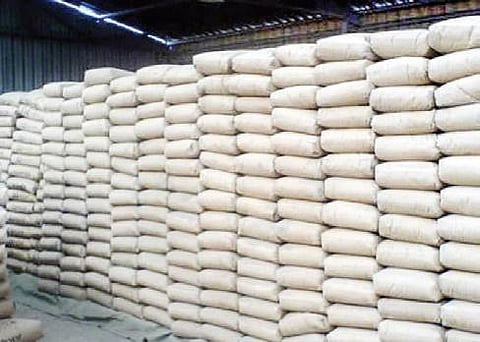

VIJAYAWADA: The Swiss Agency for Development and Cooperation (SDC) has suggested a profitable, environment-friendly and energy efficiency based new cement mix - Limestone Calcined Clay Cement (LC3) technology to the cement industry in Andhra Pradesh, which is a compelling solution that offers a sustainable, high performance and cost-effective alternative to future cement.
The new technology was offered to AP during a conference organised by the SDC, in association with the IIT Madras in Chennai on LC3, in which the Andhra Pradesh State Energy Conservation Mission took part on the invitation.
Jonathan Demenge, Head of Cooperation and Counsellor, Embassy of Switzerland in India, said the new cement mix LC3 has the potential to reduce CO2 emissions by up to 40 per cent compared to the standard cement while saving production costs in the lower energy use of around 20 per cent.
As cement is the most widely consumed building construction material and is produced in huge volumes, its production is responsible for around 8 per cent of man-made CO2 emissions. Generally, 95 per cent of clinker and 5 per cent of gypsum are used in cement production.
However, limestone calcined clay cement is unique as it combines clinker, calcined clay, limestone and gypsum. Studies have proved that the production of LC3 with a clinker content of 50 per cent results in about 40 per cent less CO2 emissions than standard cement and about 10 per cent less than other blended cement. The replacement of clinker with limestone in these blends lowers both cost and environmental impact, he said.
Reading out the message of Special Chief Secretary of Energy K Vijayanand, APSECM CEO Chandrasekhara Reddy said the State government is making all-out efforts to enhance energy efficiency in the industrial sector through efficient use of energy, reduce energy cost and also greenhouse gas emissions from industries by implementing Perform, Achieve & Trade (PAT) scheme.
Cement is one of the major sectors in the PAT scheme in AP. As of now, around 20 major cement industries are covered under the PAT scheme in the State. The annual production of these units is around 33 million tonnes of cement. These industries have saved energy to the tune of 0.35 million Toe (4,070 million units worth Rs 2,400 crore) and the corresponding reduction in CO2 is 1.05 million tonnes under the PAT scheme.
The Special Chief Secretary further said AP Chief Minister YS Jagan Mohan Reddy and Energy Minister Peddireddi Ramachandra Reddy are very keen on environmental protection. The AP government is also promoting and supporting energy efficiency activities in a big way.
Energy efficiency measures are being implemented in 28.3 lakh houses under the AP housing programme by facilitating energy-efficient appliances to beneficiaries, the Energy Secretary added.
Advantages of LC3
Low CO2 emissions
Lower energy consumption during calcination compared to clinker
Similar strengths compared to OPC and PPC
Improved durability compared to OPC due to refined pore structure
Lower production cost than OPC and PPC in many aspects
Resistivity of LC3 concrete is also significantly higher than OPC and PPC
LC3 has potential to reduce CO2 emissions by up to 40 per cent